Amir Chakhmaq Complex | What to See in Yazd, Iran
Imagine yourself wandering through the sun-drenched alleys of Yazd, an ancient Iranian city where adobe houses whisper stories of a bygone era.
The desert wind carries the scent of history, and towering windcatchers, like silent sentinels, guard the secrets of this UNESCO World Heritage Site. Suddenly, you stumble upon a sight that takes your breath away: the Amir Chakhmaq Complex.
As you walk closer to the Amir Chakhmaq Complex, you'll be amazed. This incredible building isn't just any structure; it's a place overflowing with history, the beating heart of Yazd. The Amir Chakhmaq Complex is like a maze of interesting paths. Every corner you turn could lead to something new, another piece of Iran's fascinating story. This complex welcomes you in, inviting you to explore its rich history and captivating beauty.
History of Amir Chakhmaq Complex
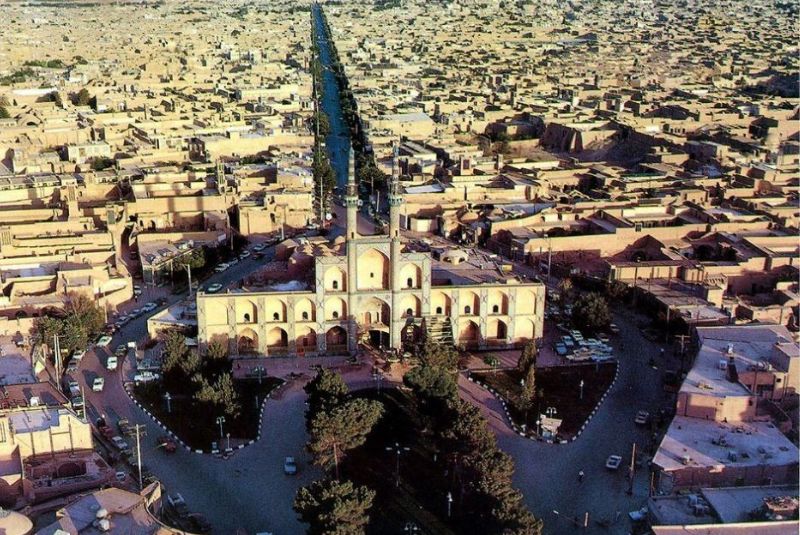
The Amir Chakhmaq Complex is a prominent historical structure in Yazd, Iran. Commissioned during the Timurid era in the 15th century by Amir Jalaleddin Chakhmaq Shami, the complex was designed to serve as a multifunctional center for social, religious, and administrative activities within the city.
Originally, the complex encompassed a marketplace, a congregational mosque, a caravanserai for travelers, a Tekyeh for religious gatherings, water storage facilities, and a well providing cold water. The Amir Chakhmaq Square, named after its founder, became the heart of the complex.
The complex's story is one of change over time. The Safavid era (16th-18th centuries) saw renovations to specific sections. In the 18th century, the caravanserai underwent refurbishment, while the 19th century witnessed the addition of a large Hosayniya for Shia religious ceremonies.
The 20th century, however, brought significant alterations. The Pahlavi era (1925-1979) prioritized modernization, leading to a reduction in the square's size and the complete removal of the caravanserai. Despite these changes, the complex's core structure, the Tekyeh, has endured.
Despite enduring political changes and natural disasters, the Amir Chakhmaq Complex has remained a symbol of resilience and continuity. Today, it continues to attract visitors from around the globe.
| Explore our Yazd Tour Packages to find the one that suits you best!
Amir Chakhmaq Complex Architecture and Design

The architecture of the Amir Chakhmaq Complex in Yazd is a striking embodiment of Persian ingenuity and aesthetic excellence. Comprising various structures and features, the complex showcases a harmonious blend of Islamic architectural elements, reflecting the cultural and historical influences of the region.
At the heart of the complex lies the iconic Amir Chakhmaq Square, dominated by a monumental three-story façade. This façade is adorned with intricate geometric patterns, delicate muqarnas (stalactite) carvings, and calligraphic inscriptions, creating a visually stunning display. The symmetrical arrangement of alcoves and arched niches not only adds to the aesthetic appeal but also serves a functional purpose, providing shade and ventilation in the arid desert climate of Yazd.
| Suggestion: Elements of Persian Architecture
One of the most notable features of the complex is the Hussainiya, a congregational hall located behind the façade. Characterized by its large portal and spacious interior, the Hussainiya has been a focal point for religious gatherings and ceremonies, particularly during the month of Muharram. The architecture of this space is designed to accommodate large crowds while maintaining a sense of solemnity and reverence.
Surrounding the square are other structures that contribute to the architectural ensemble of the complex, including a mosque, a madrasa (religious school), and a bathhouse. Each of these buildings exhibits its own unique architectural style, yet they are united by common design principles and decorative motifs.
The use of locally sourced materials such as adobe bricks, clay, and wood further enhances the connection between the architecture of the complex and its natural surroundings. This sustainable approach to construction not only ensured the durability of the buildings but also contributed to the ecological resilience of the region.
| Read more: Iranian Modern Architecture
Amir Chakhmaq Tekyeh
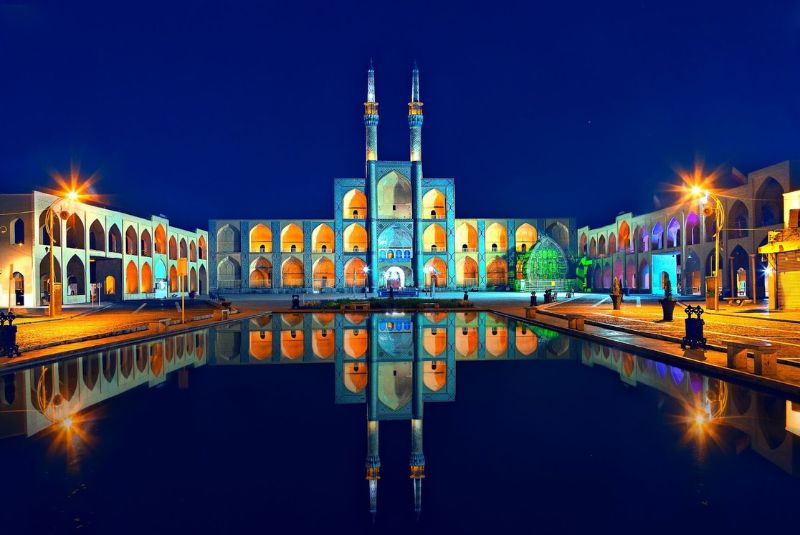
The Amir Chakhmaq Tekyeh is a prominent structure within the Amir Chakhmaq Complex in Yazd, Iran. It is a notable feature in many depictions of the complex.
A tekyeh is a building typology designed to accommodate spectators at religious rituals and other significant events. The tekyeh typically features multiple tiers or terraces, offering tiered viewing for the assembled crowds.
The specific history of the Amir Chakhmaq Tekyeh, including its construction date and the individual for whom it was named, remains unclear. However, its architectural significance is undeniable. When viewed from the central plaza of the Amir Chakhmaq Complex, the tekyeh offers a striking vista that encompasses the complex's central minarets, the graceful upper register, the forecourt, the dome, and the aforementioned viewing terraces.
The facade of the tekyeh is composed of three stories of precisely constructed alcoves (known as iwans). Mudbrick forms the structural core, while exquisite stuccowork adorns the surfaces. The central alcoves were reserved for the most prominent members of Yazd society, and these were distinguished by their greater height and more elaborate tilework.
Historically, visitors were able to ascend to the tekyeh's summit, affording them a panoramic view of Yazd's historical landmarks. Presently, public access is restricted to the first level only.
| Related: Best Hotels in Yazd for a Memorable Stay
Amir Chakhmaq Mosque

Also known as the New Grand Mosque and the Duhok Mosque, The Amir Chakhmaq Mosque is the oldest extant structure within the Amir Chakhmaq Complex in Yazd, Iran. Construction of the mosque is attributed to Amir Jalaluddin Chaghmaq Shami, the governor of Yazd, and his wife Seti Fatemeh Khatoon, during the Timurid period.
The mosque holds the distinction of being Yazd's second-largest mosque, and it is widely considered to be the most aesthetically impressive within the city. Building works commenced in 1422 AD (841 AH) and were completed by an unknown date.
The mosque's entrance porch is adorned with mosaics and tiles, some of which incorporate calligraphic inscriptions. The main sanctuary (iwan) boasts a muqarnas niche decorated with mosaic tiles, featuring a central panel of expertly carved marble. An interesting feature of the Amir Chakhmaq Mosque is the presence of two separate prayer halls: a summer hall and a winter hall, designed for use in accordance with the seasonal climate.
An inscription detailing the mosque's endowment, written in Naskh script, is set on a stone plaque near the entrance, facing the Amir Chakhmaq Square. The mosque itself occupies the southern portion of the square.
The mosque's architectural details include small mosaic tilework within the windows on the north facade. The rafters are constructed of brick, and a section of the entrance porch features mosaic detailing. The dome's exterior and its encircling band are decorated with Kufic script inscriptions that repeat the phrase "Sultan Zal Allah..." ("May God strengthen the Sultan..."). The principal mosaic tile section of the sanctuary's niche comprises a muqarnas structure, a central square floral design measuring 54 x 95 centimeters, and a piece of marble measuring 28 x 30 centimeters positioned to its left.
The eastern wall of the mosque displays mosaic tile inscriptions associated with Muhammad al-Third al-Hakim. The mosque's dome has a curved profile, clad in green tiles, and encircled by a Kufic script inscription. During the reign of Fath Ali Shah Qajar, Haji Hossein Attar oversaw an expansion of the mosque's nave and undertook repairs to other sections of the building.
| Suggestion: Towers of Silence in Yazd
Sahl ibn-Ali Tomb and Mosque

The Sahl ibn-Ali Tomb and Mosque complex is another structure located within the Amir Chakhmaq Complex. Dedicated to a revered 15th-century mystic from Yazd, the complex is constructed from traditional materials - adobe and mudbrick. The interior features inscriptions penned in the Suls script, a calligraphic style known for its clarity and elegance.
| Discover: Chak Chak Pilgrimage Site in Yazd
Seti Fatemeh Tomb
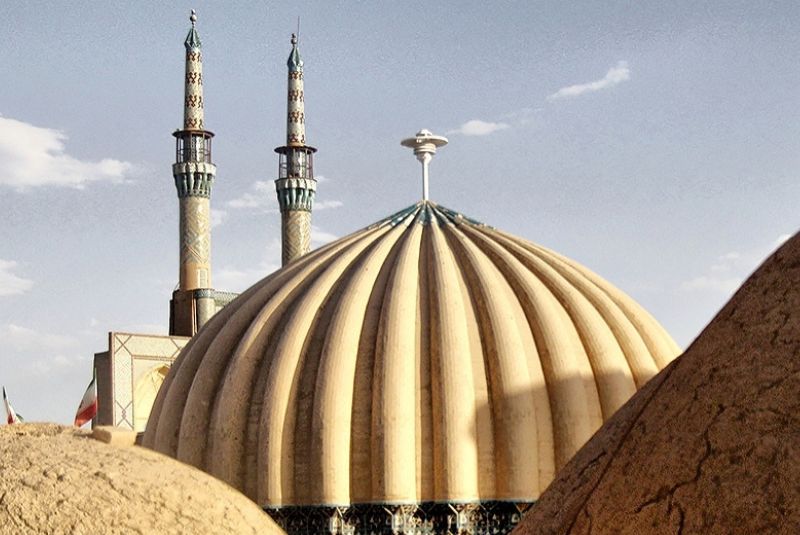
The Seti Fatemeh Tomb is a beautiful mausoleum located within the Amir Chakhmaq Complex in Yazd, Iran. It serves as the final resting place of Seti Fatemeh Khatoon, the wife of Amir Jalaluddin Chaghmaq Shami, who played a pivotal role in the development of Yazd during the Timurid era. Seti Fatemeh passed away in the 15th century.
The mausoleum's architectural style reflects the Timurid period. A particularly noteworthy feature is its unique dome, constructed from mudbrick and shaped like a melon ("khavarai" in Persian). This form is rarely encountered in Iranian architecture, making the Seti Fatemeh Tomb a distinctive landmark.
| Read more: Sarv-e Abarkuh | Cypress of Abarkuh
Water Reservoirs
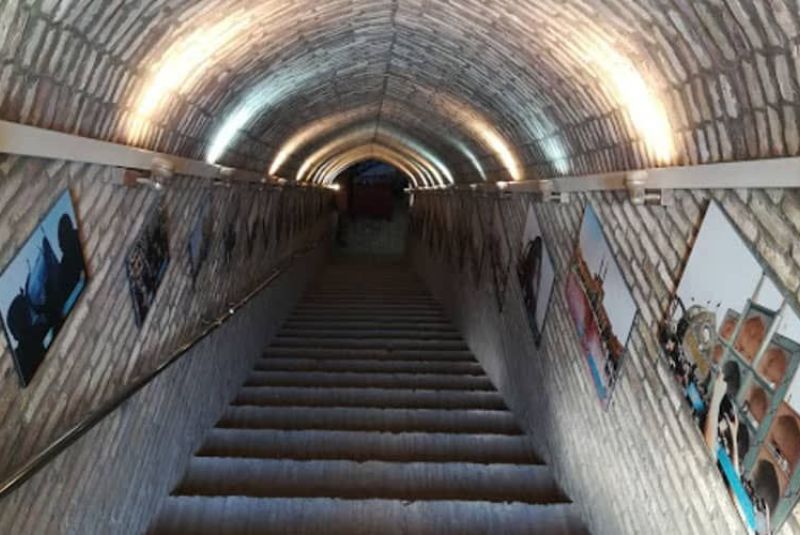
Historically, the Amir Chakhmaq Complex boasted three water reservoirs that played a vital role in the city's water management system. These reservoirs were known by various names:
- Meydan Reservoir: This reservoir is unfortunately no longer standing.
- Five Windcatchers Reservoir (also known as Seti Fatemeh Reservoir): This reservoir is named after Seti Fatemeh and is distinguished by its five tall octagonal windcatchers, a traditional Persian architectural element used for natural ventilation and cooling.
- Haj Qanbar or Tekyeh Reservoir: This reservoir derives its name from either Haj Qanbar, a potentially significant local figure, or the nearby Tekyeh building.
Today, only the Five Windcatchers Reservoir and the Haj Qanbar/Tekyeh Reservoir remain.
| Related: Qanat | Iranian Underground Water Channel
Amir Chakhmaq Bathhouse
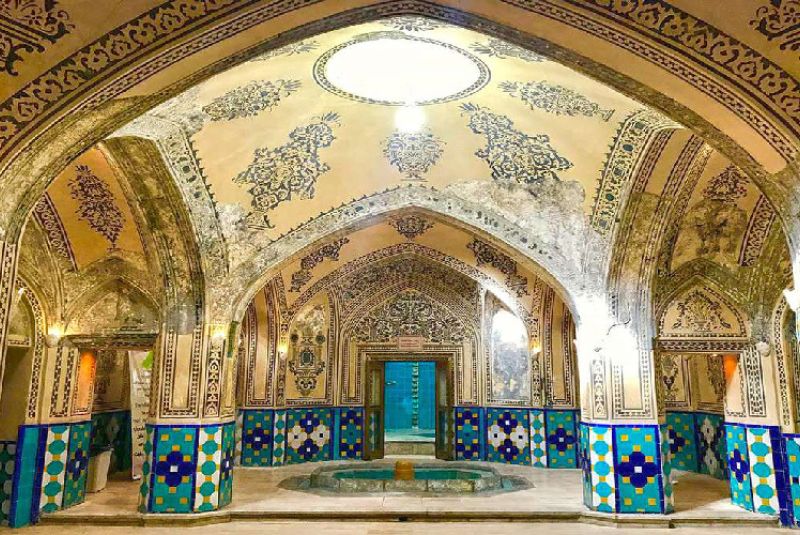
The Amir Chakhmaq Complex also encompasses a 600-year-old bathhouse. Located at the front of the complex, this historic structure offers a glimpse into the traditional bathing practices of Yazd.
Haji Ghanbar Bazaar

Yazd, like many Iranian cities, boasts a sprawling bazaar that serves as the lifeblood of the city's economy. Historically, this bazaar was a unified whole. However, during the Pahlavi dynasty, construction of Shah Street (now Ghiam Street) tragically severed the bazaar into two distinct sections.
Today, the northern section of the bazaar thrives, housing a concentration of prominent carpet, gold, confectionery, and textile vendors.
The easternmost portion of the bazaar, however, holds the distinction of being the oldest section - the Haji Ghanbar Bazaar. Its name originates from Nezamoddin Haji Ghanbar Jahanshahi, a former ruler of Yazd, who is credited with its construction. The bazaar itself serves as a tangible link to Yazd's history, with elements dating back to the 9th century of the Islamic calendar.
Within the Haji Ghanbar Bazaar, visitors can discover a treasure trove of local crafts and wares. These include shops specializing in natural products like textiles, dyes, and sesame-based sweets. The bazaar is also a prime location to find an abundance of traditional Yazdi handicrafts.
Visiting Amir Chakhmaq Complex
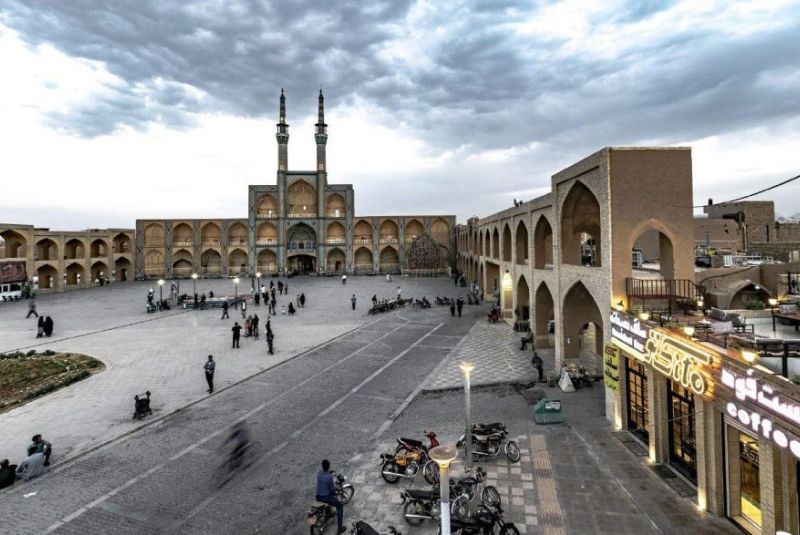
As Yazd is a desert city, avoid visiting during the scorching summer months of July and August. The most pleasant weather and the best time to visit Amir Chakhmaq house is found in spring (from March to mid-May) and fall (from November onwards). During these times, you'll experience mild temperatures and comfortable weather for exploring the complex.
The good news is that the Amir Chakhmaq Complex is generally open to the public around the clock, from 12:00 am until 11:59 pm, seven days a week. This means you can plan your visit at your convenience.
| Suggestion: Persian Garden | A Piece of Paradise in Iran
What Nearby Attractions Can I Visit?
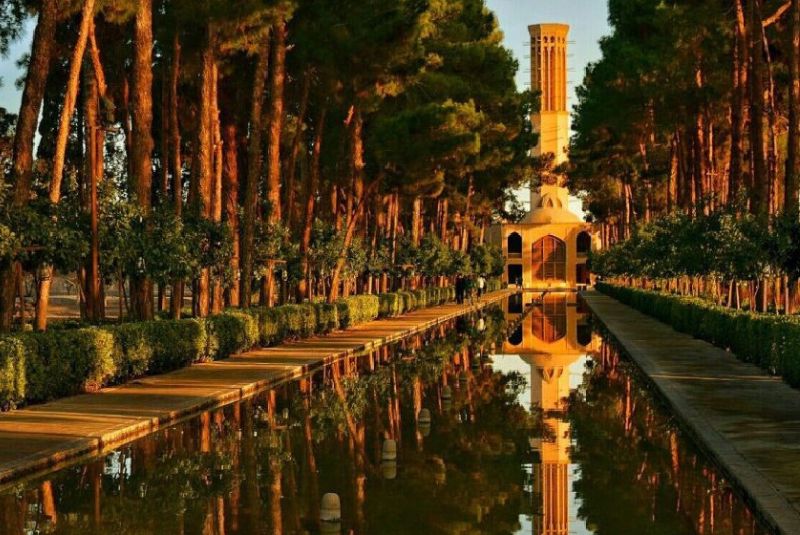
The Amir Chakhmaq Complex location is conveniently near other must-see sights in Yazd:
- Yazd Water Museum: Explore the fascinating history of Yazd's ingenious water management systems.
- Zoroastrian Fire Temple: Witness a fire that has been burning continuously for over 1,500 years, an important pilgrimage site for Zoroastrians.
- Dolat Abad Garden: A UNESCO World Heritage Site, this beautiful 18th-century garden is a serene oasis in the desert city.
In addition to these, consider including Shirdal Airya, the Oasis gallery, and Saheb A Zaman Zurkhaneh in your Yazd itinerary.
| Related: 10 Best Restaurants in Yazd
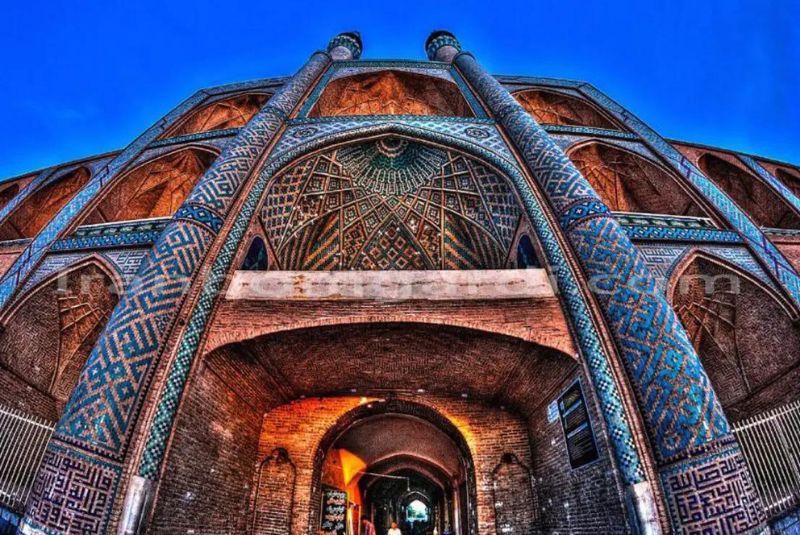
Final Takeaway
Yazd's Amir Chakhmaq Complex is a must-see, with stunning architecture and a rich history. Explore the mosque, tekyeh, and surrounding area. Yazd itself offers much more - fire temples, gardens, and bazaars. Come experience the beauty and hospitality of Yazd, Iran!
Share your story!
Comment below and let us know about your Experience.
Your story inspires others!


Comment
Leave a Comment